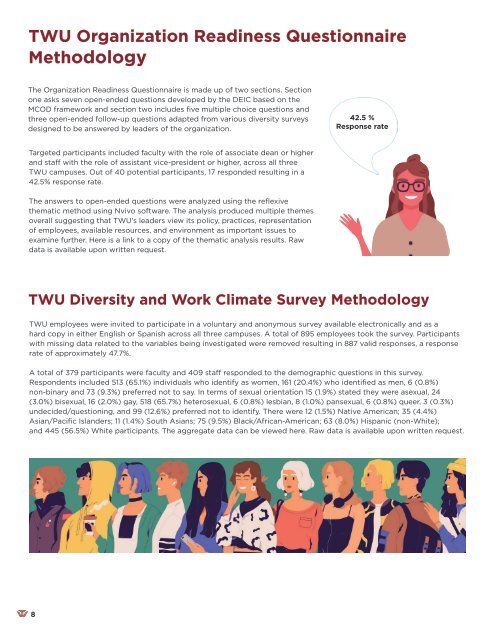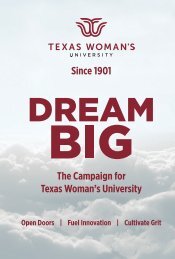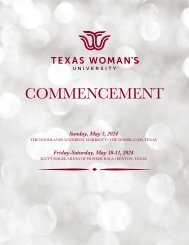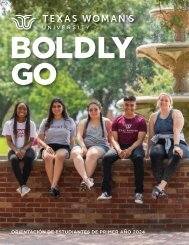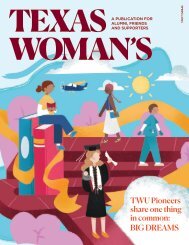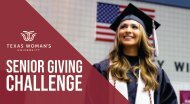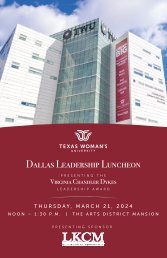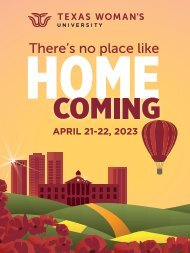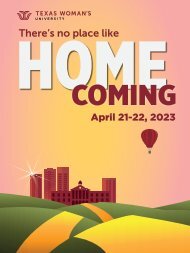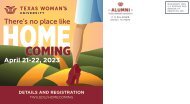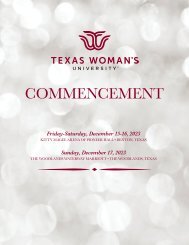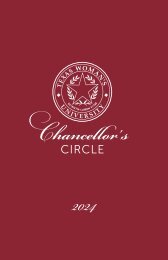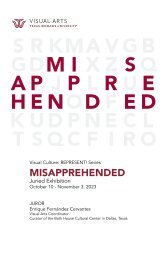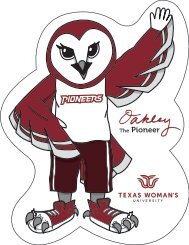Diversity, Equity and Inclusion Annual Report 2022
You also want an ePaper? Increase the reach of your titles
YUMPU automatically turns print PDFs into web optimized ePapers that Google loves.
TWU Organization Readiness Questionnaire<br />
Methodology<br />
The Organization Readiness Questionnaire is made up of two sections. Section<br />
one asks seven open-ended questions developed by the DEIC based on the<br />
MCOD framework <strong>and</strong> section two includes five multiple choice questions <strong>and</strong><br />
three open-ended follow-up questions adapted from various diversity surveys<br />
designed to be answered by leaders of the organization.<br />
42.5 %<br />
Response rate<br />
Targeted participants included faculty with the role of associate dean or higher<br />
<strong>and</strong> staff with the role of assistant vice-president or higher, across all three<br />
TWU campuses. Out of 40 potential participants, 17 responded resulting in a<br />
42.5% response rate.<br />
The answers to open-ended questions were analyzed using the reflexive<br />
thematic method using Nvivo software. The analysis produced multiple themes<br />
overall suggesting that TWU’s leaders view its policy, practices, representation<br />
of employees, available resources, <strong>and</strong> environment as important issues to<br />
examine further. Here is a link to a copy of the thematic analysis results. Raw<br />
data is available upon written request.<br />
TWU <strong>Diversity</strong> <strong>and</strong> Work Climate Survey Methodology<br />
TWU employees were invited to participate in a voluntary <strong>and</strong> anonymous survey available electronically <strong>and</strong> as a<br />
hard copy in either English or Spanish across all three campuses. A total of 895 employees took the survey. Participants<br />
with missing data related to the variables being investigated were removed resulting in 887 valid responses, a response<br />
rate of approximately 47.7%.<br />
A total of 379 participants were faculty <strong>and</strong> 409 staff responded to the demographic questions in this survey.<br />
Respondents included 513 (65.1%) individuals who identify as women, 161 (20.4%) who identified as men, 6 (0.8%)<br />
non-binary <strong>and</strong> 73 (9.3%) preferred not to say. In terms of sexual orientation 15 (1.9%) stated they were asexual, 24<br />
(3.0%) bisexual, 16 (2.0%) gay, 518 (65.7%) heterosexual, 6 (0.8%) lesbian, 8 (1.0%) pansexual, 6 (0.8%) queer, 3 (0.3%)<br />
undecided/questioning, <strong>and</strong> 99 (12.6%) preferred not to identify. There were 12 (1.5%) Native American; 35 (4.4%)<br />
Asian/Pacific Isl<strong>and</strong>ers; 11 (1.4%) South Asians; 75 (9.5%) Black/African-American; 63 (8.0%) Hispanic (non-White);<br />
<strong>and</strong> 445 (56.5%) White participants. The aggregate data can be viewed here. Raw data is available upon written request.<br />
8


